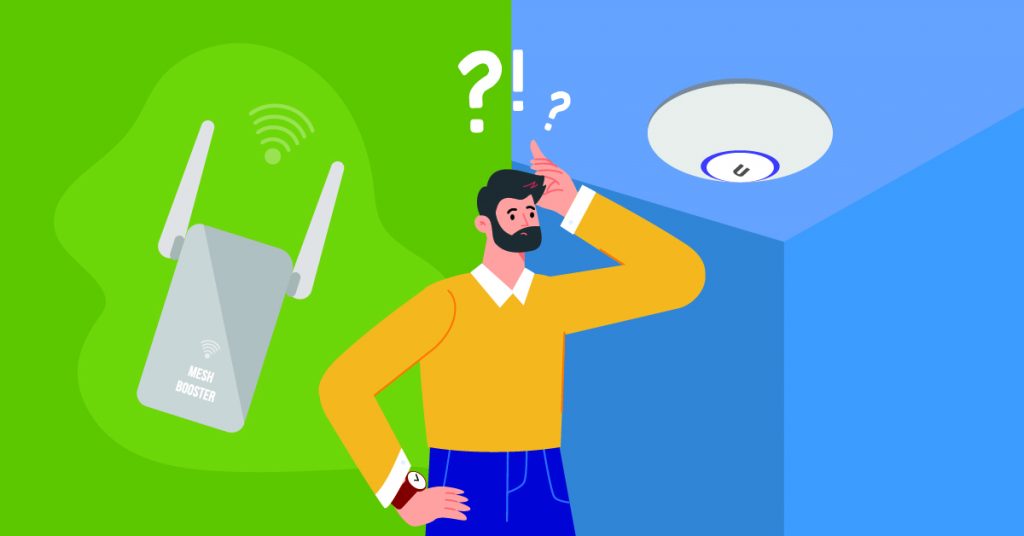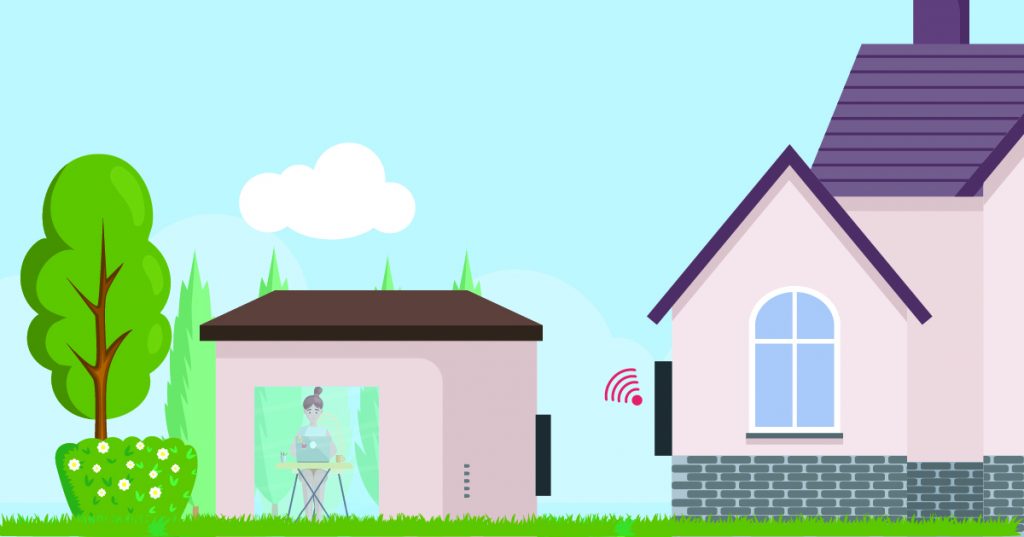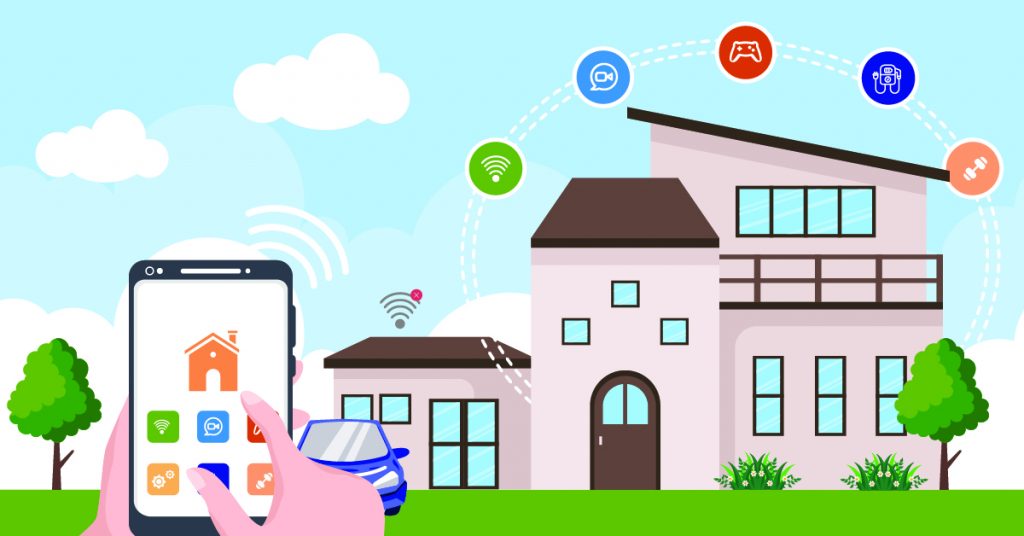
When it comes to building a reliable network for your home or small business, choosing the right Ethernet cable for your home is essential. However, that doesn’t mean the highest grade is always the best choice. For instance, with so many options like Cat 5e, Cat 6, Cat 7, and beyond, it’s easy to feel overwhelmed. As a result, many assume that higher-rated copper cables are always better. However, this isn’t necessarily the case.
In this blog, we explain why cables like Cat 6 or even Cat 5e are ideal for most residential and for applications such as gaming, streaming, and connecting IoT devices. We’ll cover why higher-grade cables like Cat 7 or Cat 8 aren’t practical. The importance of using full copper outdoor-grade cables, and why shielding isn’t necessary in most homes. Plus, we’ll clarify how cable lengths impact performance and how to ensure your network delivers seamless connectivity without overcomplicating your network infrastructure.
We have categorised the Ethernet cables based on their performance capabilities:
Higher-grade cables, especially Cat 7 and Cat 8, have thicker shielding and a smaller bend radius, making them harder to work with. They’re less flexible, damage more easily, and don’t terminate neatly in standard RJ45 connectors for homes as there is limited space for the cable. For home networks, Cat 5e or Cat 6 are far more practical and user-friendly.
Cat 7 and Cat 8 cables are significantly more expensive to buy and install, yet the average home won’t see a measurable performance improvement over Cat 6. Internet speeds in residential areas rarely exceed 2.5 Gbps, and even high-end setups rarely push beyond 10 Gbps.
The rigidity of higher-grade cables not only complicates installation but also increases the risk of damage. Excessive bending or improper termination can cause the cables to become microphonic, picking up interference, which can disrupt network performance. In home environments, where cables may need to navigate through challenging spaces like; walls, attics, or crawl spaces. The durability and ease of handling provided by Cat5e or Cat6 cables are advantageous.
Cat 5e and Cat 6
Cables like Cat 7 and Cat 8 are designed for high-performance environments, such as data centres and enterprise-level networks. Where ultra-high bandwidth and shielding are necessary to prevent crosstalk and interference, if run close to power lines in industrial environments. They’re less flexible, damage more easily, and don’t terminate neatly in standard Ethernet Sockets. For home networks, Cat 5e or Cat 6 are far more practical.
For home network enthusiasts, who are keen to select the right Ethernet cable for your home network. The key to a great setup is choosing cables that balance performance, practicality, and cost. Cat 5e and Cat 6 are the perfect fit for most residential networks, offering flexibility, ease of use, and enough capacity to handle today’s and tomorrow’s demands. While higher-grade cables like Cat 7 and Cat 8 are impressive but unnecessary for most homes. The Telecommunications Industry widely recognises that Cat 6 is a suitable choice for future-proof residential networks. As it supports 10 Gbps speeds without the complexity of higher-grade cables.
If you’re setting up or upgrading your home network and want expert advice, feel free to reach out. We specialise in creating seamless, high-performance networks for homes and small businesses. No overengineering, just reliable results. By optimising your network with the right Ethernet cable for your home, you’ll ensure a smooth, efficient, and future-ready system without breaking the bank.

Welcome to our blog on 5 essential tips to optimise your Internet connection for remote working or home study. In this post we will look at the most common internet connection problems. And cover some simple DIY productivity hacks to help you solve those every day hurdles liked dropped video calls and buffering screens. And what to do if you are still experiencing unreliable connections to work or Online Lectures.
Remote workers and students can find themselves grappling with the frustrations of poor internet connections. And sometimes feels like a constant struggle to maintain a stable and fast connection. Disruptions in video calls, delayed responses in communication, and limited access to essential resources. This can result in decreased productivity, missed deadlines, and added stress. The frustration is compounded when tasks that require a reliable online connection become challenging or impossible to complete. Additionally, when a slow internet connection disrupts the collaboration and interaction that remote work and online learning depend on, can contribute to the feeling of isolation on-line workers can sometimes encounter. These challenges highlight the critical role a reliable internet connection plays in the success and well-being of those working or studying from the home office.
Before we look at the solutions, let’s review the most common root causes of these frustrations. Distance from the router (hub), heritage constructed buildings with thick walls or new builds with insulated walls and irregular property layouts can weaken signals and slow your internet down creating wifi dead zones and unfit for purpose slow speeds.
Now we’ve identified the main reasons for poor internet, lets look at our top 5 tips for creating a stress free, harmonious environment for working or studying from home.
Poor internet coverage and the possible reasons are covered in more detail another blog called 4 causes of poor WiFi signal.
We also discuss slow internet troubleshooting tips and measuring the performance of your network in our How to Test Wi-Fi Signal Strength.
If the DIY steps don’t resolve your connectivity issues, then don’t worry there is internet connectivity help for home workers. A professionally installed home Wi-Fi network. This solution gives efficient connectivity across every corner of your property. It may surprise you that the cost of a professional WiFi system is comparable to mesh/booster systems and will deliver the most reliable and fastest wifi signal speeds throughout your property. So you can confidently connect, uninterrupted, to the internet from anywhere.
Recent studies have found that 85% of remote workers face connectivity issues, affecting overall work satisfaction. A professionally installed home wifi network. Wireless access points will consistently outperform DIY solutions, such as boosters and mesh systems in terms of coverage and reliability.
While our team at NetLinx Cabling specialises in delivering tailored WiFi solutions for Northwest England, we do understand the value of empowering users so they can optimise their own internet connections. Start with the DIY steps to enhance your connection. If your frustrations persist, NetLinx Cabling can provide the professional touch needed for smooth and streamlined connectivity.
All things considered when your frustrated, your productivity is taking a hit and you have wasted a lot of time on technology glitches. The DIY steps have not yielded the connectivity results you need. Don’t navigate the challenges of connectivity alone. You can call in tech support for remote working internet connectivity. NetLinx Cabling as your trusted partner to deliver a seamless, professional, and lasting wifi solution. A professionally installed Wi-Fi network is the most reliable route to uninterrupted remote connectivity for both work and study.
I hope you have found this blog on 5 Essential Tips to Optimise your Internet Connection for Remote Working helpful and as always don’t hesitate to get in touch with one of our friendly Wi-Fi installation team members.

Leave it to the WiFi technicians to handle all the details of the installation process.
You’ve researched how to fix slow internet speeds and booked your expert WiFi installation professionals. Finally upgrade day is nearly here, it’s time to get the internet fixed! There have been months of dealing with those agonisingly frustrating drabs of signal, buffering and dropped connections. Very soon you will be seamlessly streaming shows, online gaming without interruptions and simply enjoying the digital world on your extended WiFi. The constant struggle and the agony of sluggish internet will be a distant memory.
Now you’re counting down the days to faster browsing, smoother and seamless connectivity but you’ve been mulling over the whole idea of having work done in your home and are feeling a little apprehensive. The thought of strangers in your home, drilling holes and setting up gadgets is a tad unsettling.
In this post, we discuss what to expect on the installation day. Where our WiFi installation team to take care of the whole process. We’re here to demystify the process and show you why enlisting the help of our friendly WiFi specialists is easy and a game-changer for your home network.
A reliable and robust WiFi network is the backbone of every home or business. Whether you live in a spacious, irregular-shaped property or a home built under heritage construction. Ensuring your property is equipped with a seamlessly functioning wireless network is essential. So here at NetLinx Cabling we believe that engaging the services of expert WiFi installation professionals should be as simple and hassle-free as possible. A proficient WiFi installer can tailor the installation to accommodate the intricacies of your home, ensuring optimal coverage in every nook and cranny. Our services are suited for all levels of technical knowledge. The friendly technicians are more than happy to answer your questions to help fill in the gaps on your tech knowledge.
A correctly installed home network goes beyond merely providing internet access; it becomes the cornerstone of your smart home. Here are some key advantages:
Ever wondered what happens behind the scenes? Let’s break it down, step by step.
1) Project Requirements: A WiFi engineer will conduct an assessment of your space. This includes analysing the layout, identifying potential obstacles, and discussing your specific needs, either on-site or remotely. At this stage an experienced wireless network expert will plan the optimal cable routes for a tidy finish with cables expertly concealed, leaving your space clutter-free. It’s an opportunity to discuss your budget, any preferences around cable standards, brands and what level of overall network management you require. For our domestic clients we normally recommend Ubiquiti kit UniFi WiFi – Ubiquiti.
For most projects a site survey incurs no charge. Apart from some cases where the property or business is much larger and there are bespoke requirements. If the
2) Quotation and booking: We will send a quote, based on the requirements discussed. As long as the requirements do not change during the installation. It covers the total cost of the entire project, parts, labor and taxes. When you accept the quote, we will schedule the installation.
3) Installation Day: We pride ourselves on providing a respectful in-Home Service. Our WiFi set-up professionals prioritise care and respect for your space. They treat your home as if it were their own, ensuring a smooth installation process. Minimising disruption to your daily routine as much as possible. We have received lots of positive feedback positive feedback from our past customers.
Finally the WiFi installation day is here! Our fully insured WiFi technicians will do everything they can to ensure an easy as possible hassle-free experience for you and your family or colleagues.
In conclusion, connectivity is key and choosing the right local WiFi engineer is paramount. In the North West, our WiFi installation services offer not just expertise but a commitment to providing you with a home network that exceeds expectations. For homeowners in the North West with large, irregular, or heritage construction properties, the expertise of WiFi specialists ensures a network tailored to your unique needs.
I hope this post about what to expect on your home network up-grade day when you enlist the expertise of WiFi installation specialists has been useful. And addressed your concerns. If you would like to learn more, visit our website to get in touch with a local WiFi installation technician.

Welcome to my blog, in this post we are discussing the revolutionary work Starlink installers are performing. If you reside in a remote or under serviced area where internet connectivity has been a challenge, then read on. We will be exploring the advantages of a Starlink installation integrated with a reliable whole home Wi-Fi network.
Fortunately, advancements in satellite technology have brought us solutions like Starlink, a satellite internet system that has revolutionised internet connectivity worldwide. When properly installed along with a network configured for seamless whole home Wi-Fi. Star link offers many benefits that empower users with reliable access to the internet. We’ll take a closer look the advantages of Starlink when deployed by professional Starlink installers and integrated with a hardwired robust wall-to-wall WiFi setup. Starlink can certainly bring a game-changing experience to your doorstep, enhancing your internet connection along with with whole home Wi-Fi coverage.
With the advent of advanced technology and the growing need for high-speed internet. Starlink has emerged as a viable solution for areas plagued by poor connectivity. As the demand for this cutting-edge satellite internet service continues to rise, the need for skilled installers is more critical than ever. That is why Starlink is now a viable option to provide reliable internet access in regions where traditional internet infrastructure is limited or non-existent.
A Starlink system offers a vast array of benefits. Making it the go-to solution for homeowners and businesses seeking a superior internet connection. Here is a list of the advantages.
The transformative power of Starlink for countryside properties, holiday sites and businesses nestled far from urban areas, now having access to world-class internet connectivity is unprecedented. Not only does this enhance daily communication and entertainment options, but it also opens up a world of opportunities for businesses, education, and telecommuting.
According to recent reports, the demand for reliable satellite internet services has surged by 35% in under serviced areas of the North West of the UK. Starlink has been at the forefront of this revolution, capturing a significant share of the market. To date there have been more than 10,000 systems in the region. Bringing connectivity to countless households and businesses.
The Starlink set up is seamless, thanks to the expertise of the professional Starlink installers. Here’s a glimpse into the process:
Most importantly the impact of Starlink installation services in the North West has been nothing short of transformative. As more and more properties embrace this cutting-edge technology, the digital divide in remote and under serviced regions is rapidly closing. With the combined power of Starlink’s satellite internet and wall-to-wall WiFi networks. Users can now enjoy the benefits of seamless online experiences, bridging the gap between rural and urban connectivity.
In conclusion, Starlink, when installed correctly by Starlink set up experts is bringing high-speed, reliable internet to remote and under serviced locations like never before. As a result it has opened doors to a world of possibilities for users everywhere. Whether for personal, professional, or educational purposes, the combination of Starlink and a whole premises Wi-Fi network creates a powerful connection so users based in remote locations can now unlock their full potential on the world wide web. So, if you’re looking for a reputable Starlink installation service. And need someone to install a Starlink system that will elevate your online experience, look no further than NetLinx Cabling.
Finally, I hope you have enjoyed this blog on how Starlink installers have revolutionised internet connectivity by making fast and reliable internet connectivity available to all. If you would like to learn more visit our website for more information.

In an increasingly connected world, a strong and reliable Wi-Fi signal is essential for both work and leisure activities. However, achieving consistent Wi-Fi coverage throughout your home can be challenging, especially in larger spaces, buildings with thick walls or multiple floors. Two popular solutions for extending Wi-Fi range and ensuring reliable connectivity are setting up a home hardwired network with access points or implementing a mesh system. In this blog, we will explore the merits of hardwired access points versus mesh systems to determine the ultimate champion for the best home WiFi solution.
A hardwired network with access points involves running Ethernet cables throughout your home to connect access points strategically placed in various locations. Each access point is wired directly to your router, creating a seamless network that delivers a strong and stable Wi-Fi signal.
Mesh systems, on the other hand, rely on multiple interconnected devices, or nodes, to extend Wi-Fi coverage throughout your home. Each node acts as a transmitter and receiver, creating a mesh network.
Join us as we explore the intricacies of these options and unravel the secret to achieving high-speed, reliable, and whole-home WiFi coverage for the best home WiFi experience.
When it comes to reliable and stable home Wi-Fi, hardwired access points prove their mettle. This is particularly important for households that rely heavily on internet connectivity for work, streaming, and other activities. A hardwired network provides a consistent and stable connection that is less likely to drop or experience interference. By establishing direct connections, they eliminate the uncertainties that can plague wireless networks. No more mysterious WiFi dropouts during crucial video conferences or sudden disconnections while streaming your favorite show. Hardwired access points provide a solid foundation, delivering consistent and dependable WiFi performance that keeps you connected at all times.
While mesh networks are designed to extend wireless coverage throughout a home, the more devices that are added to the network, the slower the overall speed becomes. With a hardwired network, each device is directly connected to the network, ensuring faster speeds and less latency.
One of the key challenges in setting up a home WiFi network is achieving reliable coverage throughout your property. While mesh systems claim to offer whole-home WiFi coverage, they often fall short in delivering consistent signal strength to every corner. Hardwired access points, on the other hand, can be strategically placed throughout your home, guaranteeing reliable coverage even in the most remote parts of your house. By strategically placing access points throughout your house, you can create a comprehensive network that banishes WiFi dead zones to oblivion. From the basement to the attic, every corner of your property is engulfed in a reliable and robust WiFi signal. No more frustrating drops in connection as you roam from room to room, enjoying uninterrupted connectivity at every step.
In High-Demand Environments, households with multiple devices and high bandwidth requirements, hardwired access points shine. They are ideal for homes with gamers, content creators, and those with a multitude of smart home devices. With their ability to handle heavy loads and simultaneous connections, hardwired access points ensure that every device receives the bandwidth it deserves. Multi users on a mesh system can create network congestion.
Hardwired access points offer a level of customisation and control that sets them apart from mesh systems. With dedicated access points strategically positioned, you have complete control over your WiFi network. You can fine-tune individual access point settings, optimize channel selection, and tailor the network to your specific needs. seamless connectivity for all your devices.
Mesh systems strive to provide seamless hand-offs between nodes, the reality can be disappointing. As signals pass from one node to another, signal strength can waver, leading to potential performance hiccups. In addition, the crowded landscape of wireless signals in our modern homes can cause interference, further impacting WiFi signal strength. Hardwired access points, with their direct connections, stand strong against these obstacles, offering a more reliable and interference-free WiFi experience.
Hardwired networks provide a solid foundation for future expansion and upgrades are also more scale able than mesh networks. With a mesh network, adding more devices to the network can lead to slower speeds and reduced performance. In contrast, a hardwired network can be easily expanded by adding additional Ethernet cables and switches, allowing for greater flexibility and scalability. As technology evolves, you can easily replace or upgrade individual access points without disrupting the aesthetics of your home. This future-proofing capability allows you to adapt to the changing WiFi landscape while maintaining the visual integrity of your living space.
Finally, hardwired networks are often more cost-effective than mesh networks. While mesh networks can be convenient and easy to set up, suitable for most technical abilities. They can also be expensive, particularly if you need to purchase multiple nodes to extend coverage throughout a larger or irregularly shaped home. In contrast, hardwired networks require fewer components and can be set up using affordable Ethernet cables and switches, but do require expertise for the initial set up.
While mesh networks may be a convenient solution for some households where a quick and simple set up are a priority. However, if you’re looking for the best home WiFi solution a hardwired home network offers a number of advantages that make it a better solution for many others. In the search for the ultimate home WiFi experience, hardwired access points emerge as the champions. With their unmatched reliability, speedy seamless whole-home coverage, scalability, aesthetically pleasant appearance and ability to handle multiple devices with ease, they offer a superior solution for high-speed and stable WiFi. So, as you asses the pros and cons, remember to consider the advantages of hardwired access points. Banish WiFi woes, and keep everyone happy with a truly supreme home WiFi experience. Enjoy uninterrupted online activities for everyone under your roof.
There you have it the Best Home WiFi Solution unveiled. If you would like further information, don’t hesitate to get in touch. Check out our website, drop us a mail or give us a call.

There are many reasons to share an internet connection from one building to another. Projects such as garden offices, garage conversions, annex buildings, granny flats, shed workshops, portable offices, and connectivity for holiday accommodation, to name a few. All require robust, stable, and secure internet connectivity. WiFi can also be extended to outdoor areas to reliably access the internet from your garden patio, driveway, pool/bar area, or hot tub location. If you are looking for solutions to such problems, read on. Depending on your situation, a resolution may require one or a combination of the technologies discussed in this post on how to extend Wi-Fi outdoors to the garden studio.
Trends in Working from Home
As more people shift towards working from home, outdoor garden offices have become increasingly popular. However the convenience of working from your garden poses new challenges, one being how to get a stable internet connection over distance and past obstacles. In this blog post, we will discuss the best ways to extend Wi-Fi to your outdoor garden office.
What to Consider
The best solution for your outside building connectivity project depends on several factors. For example, distance to your outbuilding, continuity, and quality of the connection. Is the internet required for a purpose where dropouts and lag can be tolerated or is the garden studio used for a home office or online gaming where low latency and fast speeds are paramount? Let’s look at the pros and cons of the 4 best ways to extend WiFi to your Garden Studio, annex building, garage conversion, or portacabin. Further in this post, we will also look at the solutions that are not recommended and the reasons why.
Power Line Adapters
Power line adapters use electrical wiring to create a network by plugging them into your electrical wall sockets. This is a simple way of extending your network. However, there are limitations as to where you can extend internet. If the garden building is on the same ring main, then power line adapters are more likely to work. Due to the ease of installation, it’s the lowest-cost option. If you’re not too concerned with occasional dropouts and don’t need a reliable connection all the time. This is the best solution if you’re on a budget and a solid connection is not imperative.
Pros
Downsides
Hardwired Ethernet Cable
Hardwired Ethernet cable with a wireless access point is a very reliable method of getting fast and secure WiFi reliably to your Garden building. It is guaranteed to distribute the internet at speeds and quality similar to the speeds received straight to your router. The outbuilding should ideally be less than 100 meters away from the router for optimum throughput and cost efficiency. Opt for a wireless access point to enable the seamless hand off functionality. This means where you have a correctly configured network. Your phone or tablet will automatically connect as if you were in your home. With this solution you can also utilise WiFi calling, handy if mobile signal is a problem.
To install Wi-Fi in your garden office, use good quality external grade Cat 5e or Cat 6 cable. The correct cable needs to have a solid copper core with the right type of plastic sheath, to protect it from the rain and UV. This will not only give you the fastest most reliable throughput but will also provide a solution to connect your garden office to the internet for durability and longevity.
Pros
Downsides
Point to Point (PtP/P2P) or Wireless Bridge
It is possible to share wifi over long distances with PtP or multi-point network bridging technology. It works like a long-range WiFi extender for outdoors. A basic system requires a sender and a receiver, these devices need to be positioned high up, usually attached to a building or pole. A clear line of sight is required between the sender and receiver. The signal will be adversely affected when there are obstacles such as trees or buildings.
This solution is useful if you wish to share internet between cabins located long distances away from each other. A more complex system can be implemented in a holiday park where you need to distribute internet from the main source or hub to many lodges or caravans. Many businesses, campuses, hospitals, and apartment complexes use Point-to-Point WiFi Bridge systems because they can offer a lot of flexibility in terms of bridging and spreading an internet connection from a single source of internet.
Point to Point systems delivers fast internet, without too much loss of bandwidth and latency from the main hub. However, they are not as fast as a cabled solution. They are reliable delivering a good quality of service. One of the downsides to this system is that there is a single point of failure so if the main sender goes down then all of the others will lose internet, it doesn’t happen very often but should be considered when selecting a suitable solution.
Pros
Downsides
4G or 5G with Unlimited Data SIM
You can insert a SIM card into a mobile router or a 4G/5G router. If there is no sim slot you could check to see if it supports a USB dongle that can accept a sim card. Also, you will need a compatible mobile data plan from a mobile network operator that has good 4 or 5G coverage in your area.
This can be a good solution if there is no way of getting an Ethernet cable or there is no clear line of sight for PtP bridging. For this solution to work you will need good mobile data coverage in the location and don’t mind a monthly cost for the unlimited data sim. This is also slightly less reliable as the bandwidth is dependent on the availability and quality of mobile signal in your area and can vary at any given time.
Pros
Downsides
Internet Connectivity to Portable cabins
Depending on the location of the temporary office, distance from the main internet connection obstacles in-between and the ability to route an Ethernet cable. Its possible to implement one or more of these solutions to connect portable offices to the main network. Providing a robust and stable connection capable of supporting multiple users for an office set up.
Extend Wi-Fi to your Garden Office
Long-range Wi-Fi Extenders and internet boosters also known as mesh systems are not recommended as a way of reliably getting Wifi in the garden room. Mesh WiFi Extenders don’t typically boost the signal very well through walls, these systems also struggle to send the internet over enough distance to provide a usable connection outdoors. You could spend a lot of money on the system and there’s no guarantee of a continuous or stable internet connection once you have invested your money buying the kit, so for these reasons, it’s best to give the mesh/booster systems a miss.
In Summary
All things considered, the best way to get WiFi to your garden office building depends on your requirements. Are cable routes available and is the outbuilding less than 100 meters away from the router? Where there is a cable route, a hardwired cable will deliver the fastest, most reliable, and cost-effective internet connectivity for one or more end users. Where the building is over 100 meters or you would like the users to connect from multiple locations dotted around a large area, then a PtP wireless bridge would be a good choice, providing near full throughput from the router.
If you require internet in your garden bar, hot tub area, driveway, or for WiFi calling if your mobile cellular signal is poor. Outdoor access points can be used to solve these problems, but only viable if these areas are close to the main building. Where a temporary or lower installation cost solution is required a mobile unlimited SIM will give a decent internet service. Providing there is good 4 or 5G in the area and the odd dropout or service slowdown can be tolerated. The most budget-friendly but high-risk solution is power line adapters. However, be prepared that once you have made the purchase and installed them, the connectivity may not be fit for purpose or work at all. Depending on your home’s electrical wiring. They can provide an unstable solution that may not be reliable enough for remote working or gaming. Buying a WiFi Booster for your garden or extending the WiFi using a mesh system is not recommended, in our experience, they just don’t amplify signal well over such distances and they don’t perform well at getting a good Wi-Fi signal to penetrate walls.
I hope you have enjoyed this post on How to Extend WiFi to your Garden Office . If you would like further information, don’t hesitate to get in touch. Check out our website, drop us a mail or give us a call.

When should you consider that it’s time to upgrade your home Wi-Fi? In this post, I discuss 5 of the tell-tale signs that your household’s tech needs have outgrown the capacity of your current home Wi-Fi system. We discuss methods to check if your broadband subscription needs upgrading or there are line faults that need fixing. If the five common home technology scenarios discussed are familiar occurrences. Finally I discuss how to restore online harmony. With a strong and stable connection throughout your home.
Have you been in the middle of a video call with colleagues when your audio suddenly distorts and becomes inaudible? Or the video image freezes and you drop out of the conversation completely. It’s embarrassing and sometimes costly. This random problem often leaves you wondering why some times your Wi-Fi connection seems ok. Then other times you can barely manage to get anything done around slow connectivity and complete disconnects.
Have you ever settled down to stream your favourite series and found yourself watching the buffering circle turning? This irritating situation is a symptom of your smart TV not receiving an adequate Wi-Fi signal to download the content quickly enough.
This common issue occurs when the device connected to the Wi-Fi is not communicating fast enough with the router. Therefore, the experience is a noticeable lag when online gaming. The most efficient and fastest method to transport data is via a cable from the console, PC, or tablet to the router. Where this is not possible, most up-to-date, correctly configured home Wi-Fi installations will support data throughput so that the gaming experience is unaffected.
Many modern CCTV and Alarm systems rely on a consistent and stable connection from the device to the internet. For example, if your cameras frequently drop offline, you will find that most features will not function as intended. You may get flaky video when viewing your property remotely or missing footage if you ever want to playback the footage.
Technology continues to provide us with many helpful and convenient applications both in and around the home. There are many reasons why it is increasingly important to have a strong and consistent internet connection outdoors. Examples include charging and communicating with your EV (Electric Vehicle) and continuous and reliable functioning of home security systems. Adequate Wi-Fi reach is essential for music and internet access in your garden patio, bar, or office areas. All these examples are reliant on reliable and consistent Wi-Fi. Distance from the router is a common reason for this problem and a sign that an upgrade to your home Wi-Fi network is overdue.
If one or more of the above scenarios blight your online time. Your current setup may be creaking under the strain. There is a good chance that it’s time to upgrade your home Wi-Fi network. There are a few possible causes to consider. One or more of your Network devices could be overloaded and not have enough capacity to cope with the activity. Other things to consider are a home network bottleneck or a problem with the broadband service to your home. In most cases, the root cause of home internet connectivity issues is the distance to the nearest Wi-Fi router, booster, or access point.
Technology is continually advancing, so it makes sense that your home Network should also be up-to-date to best support your tech. Wi-Fi 6 is the latest network protocol. It provides a greater streaming capacity for all your Wi-Fi 6 compatible devices to communicate effectively with your router. Wi-Fi 5 is still a viable protocol and supports ample capacity, speeds, and device compatibility. Meeting the performance needs of most households. Leading us to the next question; do I upgrade the broadband subscription or optimise and distribute my bandwidth more efficiently?
You can assess if your home has reached broadband capacity by following our handy guide How to Test the Wi-Fi Signal Strength in your Home.
This blog walks you through testing broadband to your property. Then compare the strength and quality of Wi-Fi signals in various locations around your home.
If the bandwidth to your home is ample reliable and consistent. You might be planning a new tech purchase, signing up for a streaming subscription, smart home automation, installing a security system, or purchasing an electric car. Bearing in mind these will all add extra overhead to your network. The next step is to consult a professional Wi-Fi engineer to assess how to distribute the available bandwidth where you need it.
In conclusion, installing a quality home network, correctly, will provide the infrastructure to support all your devices and systems to their optimum potential. It’s worth overhauling your home network infrastructure to prevent any pesky, annoying, and sometimes embarrassing connectivity issues. Now you can easily spot the signs that it’s time to upgrade your home Wi-Fi. If you would like further information, don’t hesitate to get in touch. Check out our website, drop us a mail or give us a call.

Welcome to our blog post on how to test WiFi signal strength in your home. In this post, we will be looking at the free online tests that you can run. As well as taking a closer look at the most meaningful measures of WiFi, signal strength, consistency, and throughput. And how that translates to dropouts, lag, and buffering on your network.
The fastest and simplest way of checking the quality of your wireless network is the WiFi signal indicator icon. The more bars you have the stronger the WiFi signal is being received by the device. However, signal strength alone is not an indication of quality, a user can still experience a frustrating time while trying to get things done online.
When deciding how to test WiFi signal strength in your home lets concider the common issues. These can be characterised by high network latency (lag), weak signal (Poor reach), and or low throughput (speed). For example, when you are gaming online with high latency. You tell your character to walk, there is a delay before they move. Or you’re connected to video calls and suffering poor video and audio quality. This is lag and is the symptom of high latency. Latency is how fast data travels to a destination (server) and back again. i.e. the total round trip of a packet of data.
A weak signal is normally easily identified by the signal strength bar indicator. Problems can be intermittent depending on the distance from the nearest WiFi point or router. Other environmental conditions can affect this also. This is discussed in more detail in another post 4 Causes of poor WiFi in your Home.
If your network isn’t fast enough to meet the demands of its users at any given time then you will experience buffering. This is the reason you are waiting for Netflix to download enough of the stream before it can start or resume the program. The network speed test measures the time it takes for a certain amount of data to travel from a destination i.e. a server to your device this is the download speed. The upload speed checks how quickly your device sends data back to a server.
The first step in this how to test WiFi signal strength guide, is to establish a base line. This is done by checking the throughput and jitter you are receiving into your property. There are many free browser based online, speed tests you can use. Look out for one that measures the download/upload speeds and jitter. Cloud Flare is an example of a site that measures jitter, there are many others out there to choose from.
Many factors may affect the results of your speed tests. For example the device, time of day, and the speed test tool can all add variables. That’s why it’s best to keep these things consistent if possible. Use a laptop if that’s possible as you will be able to test your router directly to get a baseline as to what speed and pings you are receiving straight to your property from your ISP (internet service provider).
First of all plug an Ethernet cable from your laptop directly into your router and run the online speed test.
Check that the download speed is reasonable for the broadband package that you have. For smooth gaming and video calls, a jitter of no more than 30ms is adequate. The results will vary depending on the time of day so it’s best to take an average over a few days. If you’re consistently not getting the required results then contact your ISP for a diagnostics session.
Now you have a baseline to compare your results to. You will need to know how to test WiFi signal strength in and around your property. The next step is to unplug your laptop from the router and connect to your WiFi network. Move around your house making a note of the upload, download, and jitter readings in various locations. If you suspect you have WiFi black spots then run the test from these locations. Where the download and upload are much less in certain areas then you know that you have problems with the quality of the signal or signal reach. A high jitter in the area means you have a problem with network interference, blocked signal, or packet loss flooding the network.
If you are experiencing a big loss in speed or the jitter is higher than desirable. Check which access point you are linked to. Your network might not have the roaming feature or it isn’t handing off correctly. Or you might not be connected to the closest access point.
A slow or jittery network can still show full bars on the signal indicator, this isn’t always the full picture. If you’re experiencing issues with your internet connectivity, it’s worth spending the time to find out where your bottleneck is.
If the problem is within your home, its time to review and possibly upgrade or expand your existing network infrastructure. Mesh systems typically do a good job of boosting the signal strength but not necessarily the signal quality. Expanding your WiFi reach using boosters increases latency and reduces throughput at each node. Distributing a more and more distorted signal at each node.
Just because you are located further away from the router doesn’t mean that you should suffer from poor service.
Hardwired access points will distribute internet more effectively. Meaning you can expect to see throughput and latency at speeds much closer to what is received to your property.
I hope you have found this post on how to test WiFi signal strength in your home helpful. Check out our website for further information, and of course drop us a mail, give us a call, or complete the contact us form for further information.
If you’re experiencing poor WiFi signal coverage in your home. It can cause a lot of anxiety when faced with that important video meeting, home-schooling lesson or settling down to stream your favourite TV series. In this blog post we will discuss some of the reasons behind why your WiFi is not up to the job.

ISP (Internet Service Provider) This is a problem with the service to the door. Typically when the problem occurs, it affects every device on your network at the same time. Check the router to see if the service light is solid green when your network is faulting. Another way to diagnose a service fault is to sit next to the router with an Ethernet cable. Plug your laptop directly into the LAN port to see if you get the same problem on a direct connection to your router. Contacting your ISP for a diagnostic call should sort the issue, otherwise consider a 4 or 5G backup router and sim card.
If you are experiencing intermittent low WiFi signal, dropouts, and disconnects. The issue could be the construction of the building. Some properties soak up WiFi this is due to the construction materials. Masonry, timber, and concrete walls are more problematic for WiFi signals. Water and metal are also notorious for interfering with WiFi. Aquariums and under-floor heating can affect how far your WiFi signal will travel. It is possible that moving your router to another location may improve the performance of your network.
WiFi poor network speeds and lag can be caused by signal interference from other WiFi networks. These can be other networks in your home, such as your home entertainment media system or externally if a neighbours wireless network is configured to the same frequency. Sources of signal interference in you home can be incorrectly set up SKY Q systems or Mesh networks that are oversaturating the signal in your home.
Devices that use blue tooth, baby monitors, remote alarms, microwaves and TV’s can cause intermittent disturbance in the frequency range of most WiFi networks.
Where WiFi signal is none existent or very weak with distance from the router, especially upstairs. The issue is likely to be that the signal cannot extend as far as you need it to. Similarly, if your home is an irregular shape with lots of external walls. Your WiFi signal may not be able to penetrate the thicker walls.
There are some straight forward solutions you can implement to remedy your poor WiFi signal coverage in your home. However, if your home is constructed with WiFi impermeable materials, contains signal soaking obstacles or is large or an irregular shape. You may have tried the WiFi extending products such as powerline adapters (home plugs), WiFi boosters and extenders without success. Then the gold standard solution is a home data network installation.
A correctly planned and configured home network will extend wireless signal and work around the obstacles. It will provide internet connectivity at the range, reliability, security and speed to support all your on-line devices. There are two main home network topologies to consider; either a mesh network or a star wired ethernet backbone with wireless access points. We will discuss the relative merits of each of these types of networks in more depth on a future post.
I hope you have found this article helpful on the causes of poor WiFi signal coverage in your home, if you have check out our website for further information, and of course drop us a mail, give us a call or complete the contact us form for further information.
Here's what our customers are saying about us.